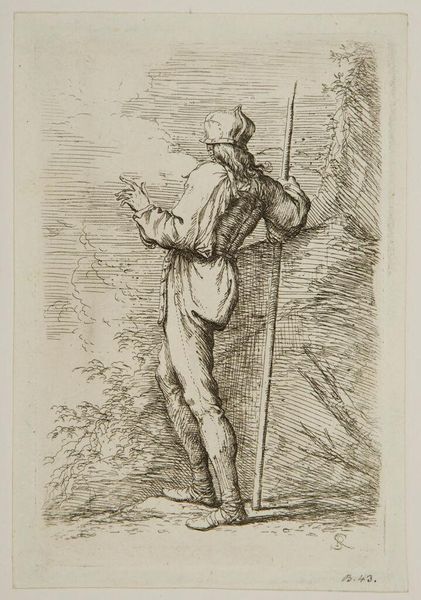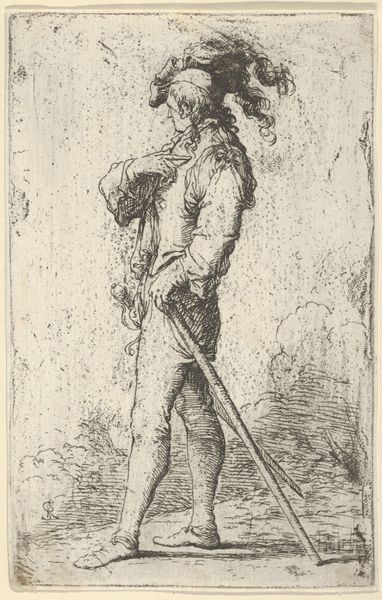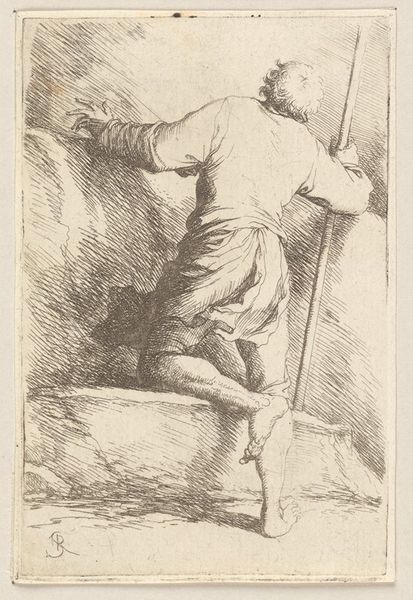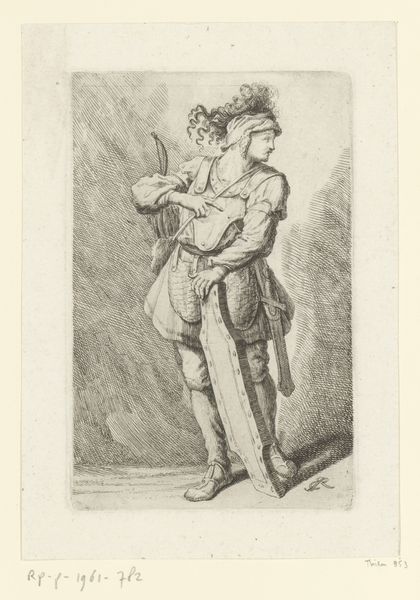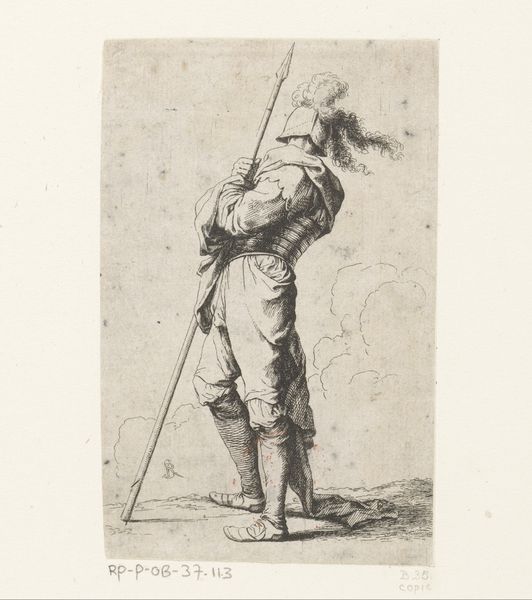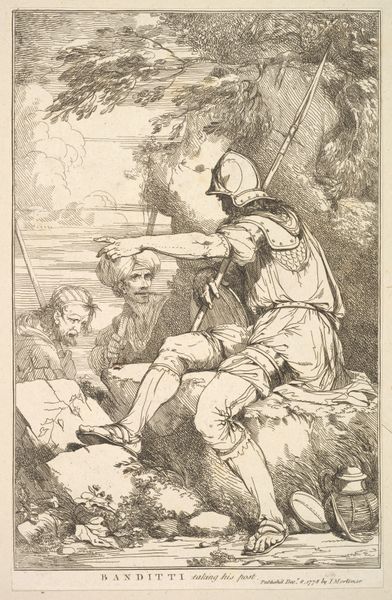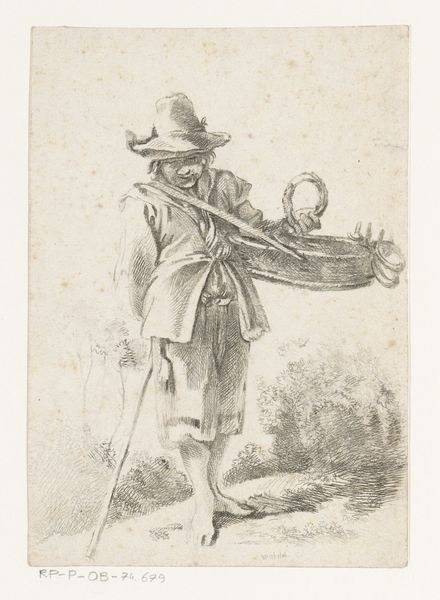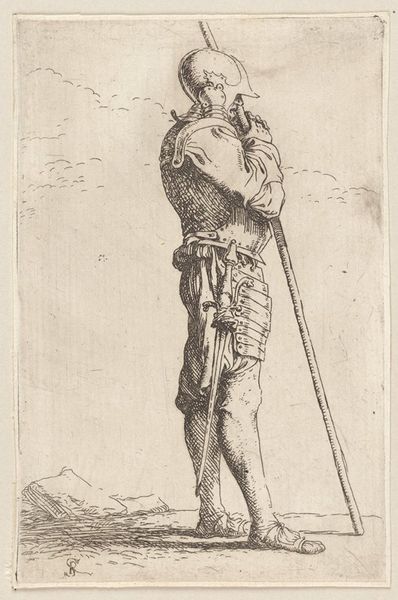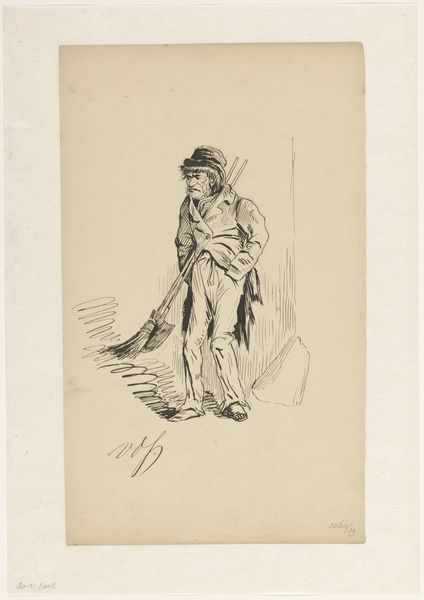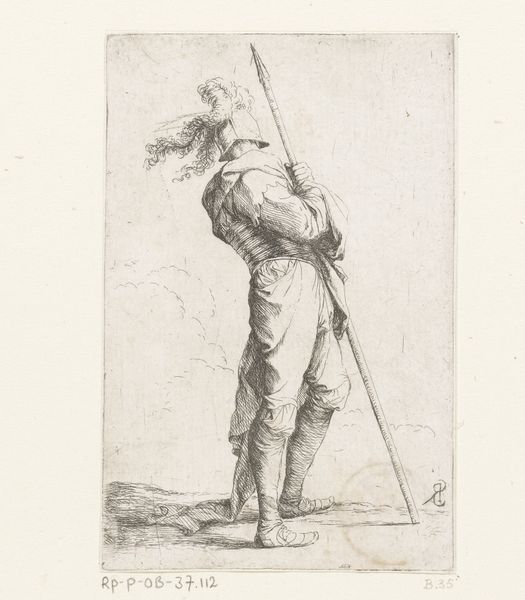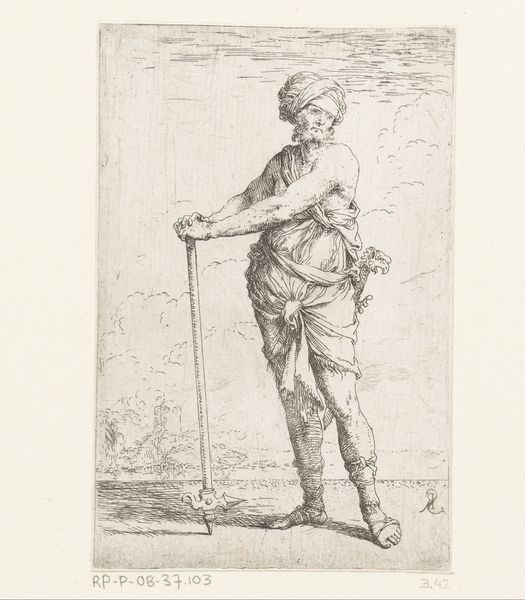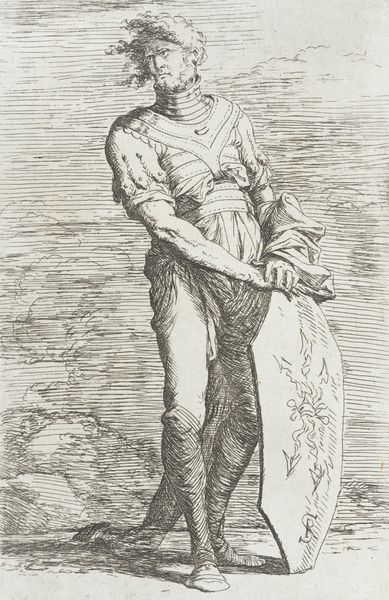
A warrior shown from behind holding a staff and leaning on a rock, from the series 'Figurine' 1651 - 1661
0:00
0:00
drawing, etching, engraving
#
drawing
#
ink drawing
#
baroque
#
etching
#
landscape
#
figuration
#
history-painting
#
engraving
Dimensions: sheet: 5 3/4 x 3 13/16 in. (14.6 x 9.7 cm)
Copyright: Public Domain
Curator: Salvator Rosa created this etching, titled "A warrior shown from behind holding a staff and leaning on a rock, from the series 'Figurine'" sometime between 1651 and 1661. Editor: Immediately I'm struck by the solitude and the weariness captured in that lean, etched figure. There’s a distinct Baroque sense of drama despite the intimate scale. Curator: Indeed. Rosa was deeply interested in portraying figures who existed outside societal norms. He often depicted soldiers, bandits, and other "outsiders" in his art. It's part of a wider fascination in European art with individualism during the Baroque era. What do you make of the figure's pose, as well as the staff and headwear? Editor: The staff acts as both a prop and an iconographic anchor, a symbol of authority but also burden—this figure's power isn't straightforward or triumphant. And look at that somewhat eccentric hat, a mark of identity or rank. Rosa uses the symbol to signal the psychological complexities in the social tensions surrounding class. The gesture of the hand is strange, perhaps he's pointing? It introduces a sense of purpose to what otherwise would seem like rest. Curator: Exactly. What’s interesting is how Rosa used the printing press and printmaking processes like etching and engraving to broadly disseminate such themes of individualism. It democratized these ideas, taking them from aristocratic salons to a wider public sphere. What kind of impact might such art have had? Editor: This form of figuration democratized symbols, presenting types and individuals within allegories about labor, struggle and meaning that could be universally understood. Here we also see him with what seems like barren vegetation—that’s also laden with symbolic weight, likely about life cycles and hardship, presented by this particular warrior's life of solitude. The image would, indeed, have held emotional resonance for many struggling populations within Europe at this time. Curator: It certainly humanizes what might be regarded as heroic or martial status through such a focus on quiet observation rather than grand narrative. He subverts the expectation to see how power manifests itself socially, in his depiction. Editor: Indeed, and what is perhaps most striking is Rosa’s ability to communicate layers of cultural messaging through the art of character. This drawing shows a historical record of that sentiment during a period in flux, open for continuous reflection through the signs embedded into this figure’s journey.
Comments
No comments
Be the first to comment and join the conversation on the ultimate creative platform.
